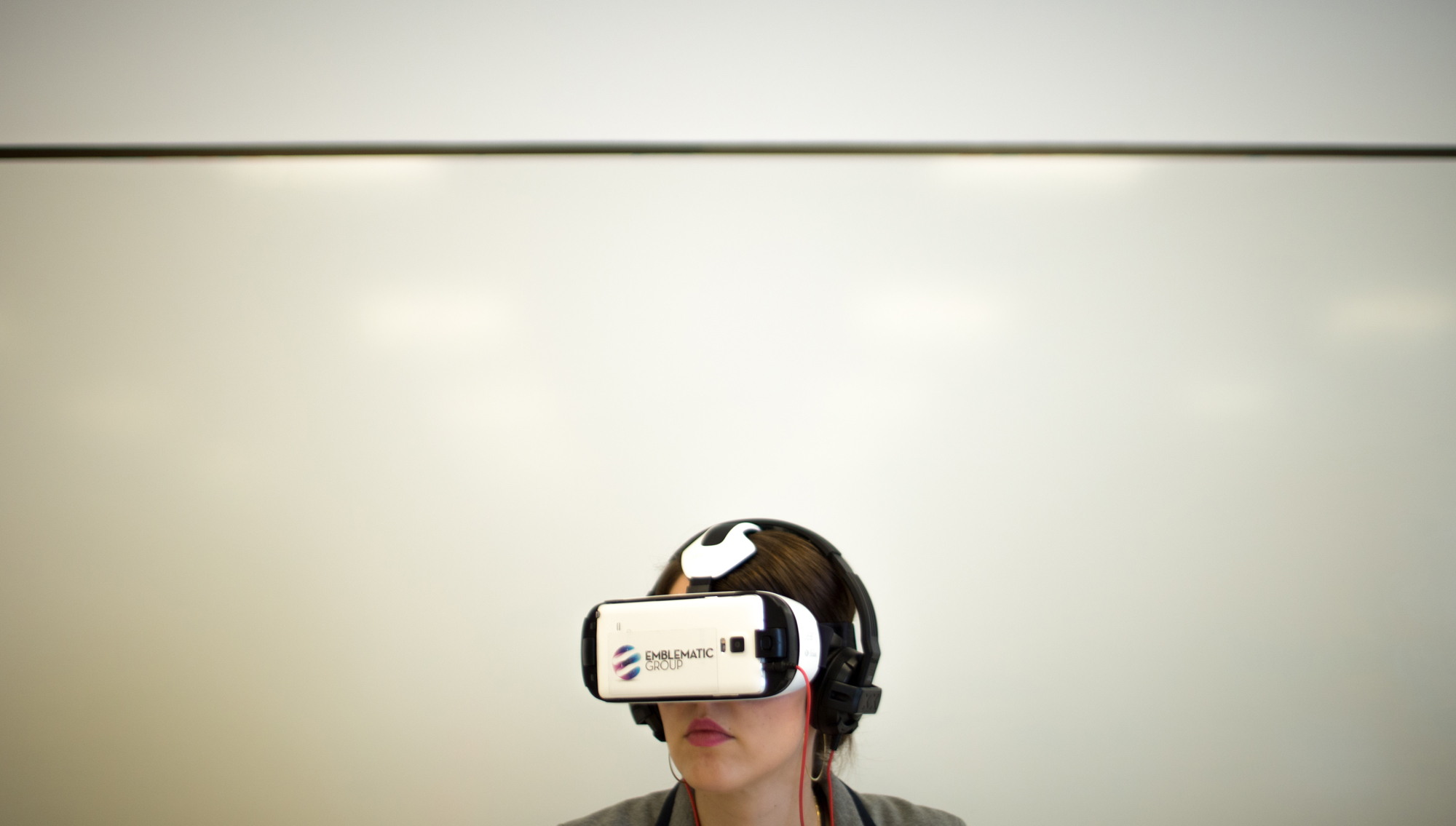SXSW: From prototyping to editing, VR tips from the filmmakers
Storybench flew all the way to Austin, Texas to attend South by Southwest, the world-renowned tech and innovation conference. Virtual reality, needless to say, was the hot topic this year. And at most every VR session, the main takeaway was: VR is hard because it is completely different from any media that’s come before it. It is hard, new and it is still in a beta phase. Traditional storytelling rules do not apply. In fact, they need to be thrown out the window.
Below, reporters Rachel Grozanick and Felippe Rodrigues, both students in Northeastern’s Media Innovation program, round up some of the takeaways from SXSW that VR creators should bear in mind.
Use the absence of standards to your advantage
Brazilian director Ricardo Laganaro made up his own rules for one of his latest films, “Step to the Line,” a VR documentary about NGO Defy Ventures’s work with inmates in the United States. The doc was recently selected to appear at the Tribeca Film Festival this year.
“You don’t necessarily have to create things all around the user all the time,” he explained at SXSW. “Sometimes, close-ups can be used to guide the narrative and make the user focus on one thing. It can then be followed by wide shots where the user can explore again.” Quico Meirelles, another Brazilian director, agreed. “That is when the VR works at its best,” said Meirelles.
https://www.facebook.com/DefyVentures/videos/1213275772074015/
Edit with exploration in mind
Jessica Brillhart, Principal Filmmaker for VR at Google, is the author of the fantastic Medium series “In the Blink of a Mind,” about editing virtual reality. To Brillhart, VR is not just about stories but about allowing audience to explore by themselves.
“You’re basically trying to find a way to pull someone through this universe which is really the essence of what we mean when we say ‘editing’, in general. It’s just: how do you pull someone through seemingly disparate experiences to then find a narrative within that?” she explained.

Balance creative expression with audience experience
To Yelena Rachitsky, Executive Producer of Experiences at Oculus, immersive VR content is a meeting between the audience experience and the creator’s conceptual ideas.
“It’s kind of a tension between the director who’s creating the experience and the person who’s experiencing it,” she said. “The director can only create so much of the world they want you to be in and the thing they want you to experience, but you as the person in it, your eyes are the camera and it’s your choice how you’re taking in the story.”
Prototype and script for yourself as well as others
VR is a “somatic medium,” said Julia Sourikoff, executive producer at VR Tool of North America, referring to how there is also a physical element to the experience. So, how do you explain what your project is to someone? How do you explain how someone will experience it?
To Oculus’s Rachitsky, you have to make clear what that world looks like. To show how someone will be emotionally carried through the story, creating prototypes, even if they are just a series of photos, is the way to go.
Laganaro and Meirelles also echoed those practices and mentioned how they spent 14 months scripting one single project, the ambitious “Cosmos,” an immersive experience about the creation of the universe, directed by Laganaro. “It is important to show other people what you want to create in a clear way, but that is hard to do until you, yourself understand the project,” Laganaro said.
Consider annotations and data visualization
Nathan Griffiths’ work at the Associated Press ranges from breaking news in 360 (featured on Storybench here) to more immersive experiences such as Nimrud’s Riches, shot in Iraq. He has also produced other stories, including one about China’s air pollution, where graphics played an important role. The annotations were created using Adobe Illustrator as well as Premiere Pro plugins from Mettle.
“We have been doing more of this recently, what we call the ‘annotation layer,’ ” said Griffiths. “It is using data visualization in a sense. It is an excellent way to provide more information for the viewers, and also good way to guide through the scenes and help direct attention when needed.” But do not use annotations in excess, he warned.
https://www.facebook.com/APNews/videos/10154306824366623/





